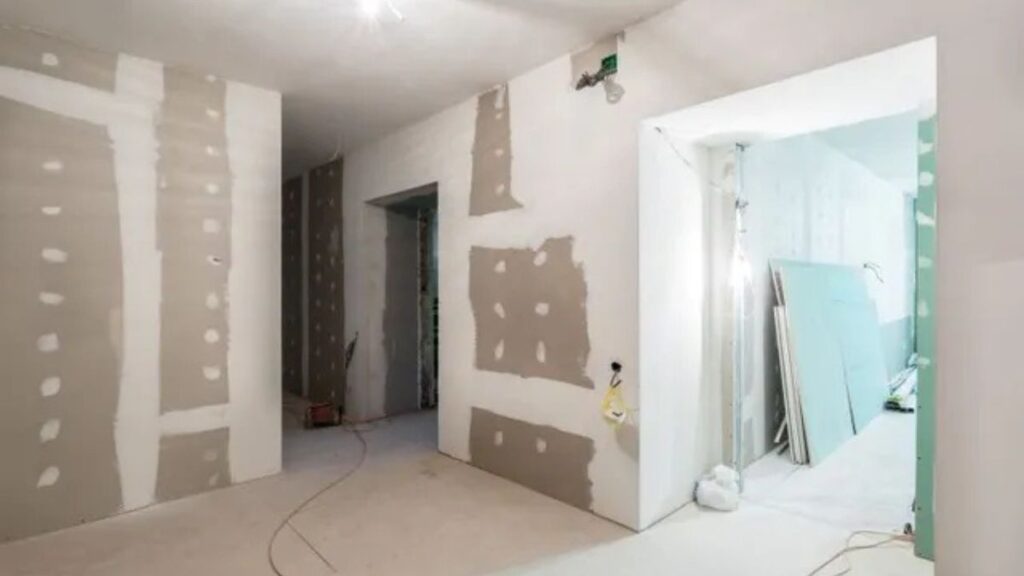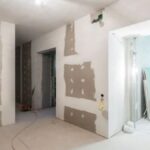When people think about increasing their home’s value, they often focus on big upgrades like kitchen remodels, new flooring, or fresh paint. But one of the most overlooked factors that can quietly affect a home’s worth is the condition of its drywall.
Smooth, solid walls make a home feel clean and well-maintained, while damaged or aging drywall can signal neglect and hidden issues beneath the surface.
Even minor drywall issues can decrease your home’s value over time. Problems such as hidden moisture, mold, cracks, or poor repairs can quietly diminish your property’s appeal and its resale potential. Being aware of these issues helps protect your investment and ensures a healthier, more comfortable home.
Insights from experts at Perfect Walls reveal that many hidden drywall issues are often overlooked until they necessitate significant repairs.
Here are some of the most common hidden drywall issues that could be lowering your home’s value, issues that many homeowners face without even realizing it.
- Moisture Damage Hidden Behind the Paint
Moisture is one of the biggest enemies of drywall. It can sneak in from roof leaks, plumbing problems, or high indoor humidity and start to weaken the material from the inside. By the time you notice stains, peeling paint, or bubbling, the damage might already be widespread.
Wet drywall can warp, soften, or crumble, and the damp environment inside your walls can lead to the growth of mold and mildew. Even if the surface looks normal, moisture trapped behind it will continue to damage wood framing, insulation, and electrical wiring.
Home inspectors are trained to look for signs of water intrusion. Even a small stain or soft area on drywall can lead buyers to assume there are hidden leaks, which often results in lower offers or repair credits.
If you suspect hidden water damage, it’s crucial to schedule a professional inspection to identify the issue. Replacing the affected drywall and fixing the source of moisture not only restores strength and safety but also helps maintain your home’s value. Remember, professional help is always the best solution.
- Mold Growing Beneath the Surface
Mold is one of the most damaging and health-threatening problems that can affect drywall. It often begins small and out of sight, typically in damp areas such as bathrooms, kitchens, and basements. Because drywall is porous, mold can grow behind the surface, making it difficult to clean.
Signs of mold include a musty odor, peeling paint, or discolored patches that reappear even after cleaning. Many homeowners attempt to paint over these spots, unaware that mold spores continue to spread beneath the surface.
Mold issues can significantly reduce a property’s value and deter potential buyers. A home with mold concerns may require professional remediation before it can sell, which can delay transactions and increase costs.
Remove and replace any drywall that has been affected by mold. The experts at Perfect Walls recommend addressing the moisture problem before installing new drywall to prevent recurrence. You can also upgrade to mold-resistant drywall products for added protection.
- Cracks and Structural Stress
Some cracks in drywall are normal as homes settle, but large or recurring cracks can point to deeper structural issues. If you see cracks forming along ceilings, corners, or above door frames, it may indicate that the foundation or framing is shifting.
Cracks that return after patching or cause the drywall to bulge or separate from the studs should not be ignored. These are signs that the wall is under stress and may eventually lead to more extensive and costly damage.
Visible cracks can make a home seem poorly maintained and raise concerns about its structural integrity. Buyers often assume the worst and reduce their offer or demand a professional inspection before proceeding.
If cracks continue to reappear, contact a professional drywall contractor to inspect the issue and determine the cause. Replacing the damaged sections after addressing the root cause helps restore both the appearance and strength of your wall
- Poor or Inconsistent Repairs
Many homeowners try to handle drywall repairs on their own, but DIY patchwork can hurt the value of a home when done incorrectly. Uneven seams, mismatched textures, or visible patches can make even a freshly painted room look unpolished.
Sometimes, these imperfect repairs also conceal larger issues, such as moisture damage or pest activity, that may be hidden behind the wall. Multiple patch marks across large areas can make the surface uneven and signal to buyers that the home has ongoing maintenance problems.
A poorly repaired wall gives the impression that other parts of the home may have been handled in the same manner. It can lower buyer confidence and make your property harder to sell at full value.
If you notice multiple patches or inconsistent finishes, it might be time to replace those sections. Professionals recommend complete drywall replacement in areas with extensive or repeated repairs to achieve a clean, seamless, and long-lasting look.
- Aging or Outdated Drywall Materials
Drywall technology has advanced over the years. Older materials may not meet today’s safety and performance standards for fire resistance, moisture control, and durability. In homes built decades ago, drywall can become brittle, uneven, and more prone to cracking or crumbling.
You might notice that your walls feel chalky, paint peels easily, or minor dents and imperfections return no matter how often you patch them. These are signs that the drywall is deteriorating due to age.
Outdated drywall can make your home feel older and less energy-efficient, reducing its overall appeal to potential buyers. Modern buyers value homes with updated materials that are easier to maintain and safer for long-term living.
If your drywall is several decades old, replacing it can refresh your home’s appearance while enhancing insulation, improving fire safety, and enhancing moisture protection. Upgrading to modern drywall products adds long-term value and peace of mind.
These Problems Matter More Than You Think
Your walls do more than define your space. They reflect the quality and care put into your home. Hidden drywall damage not only affects the appearance of your home but also impacts air quality, safety, and its resale potential.
Even minor issues, when left untreated, can grow into bigger problems that lower your home’s value. By taking the time to inspect your drywall or having a professional evaluate it, you can prevent costly repairs and protect your investment before it is too late.
Strong Walls Protect Your Home’s Value
Drywall may seem like a simple material, but it has a significant impact on your property’s appearance and value. Hidden moisture, mold, cracks, or poor repairs can all quietly reduce your home’s value and cause long-term damage.
Replacing damaged drywall and updating older materials helps maintain your home’s structure, boosts its visual appeal, and protects your investment for the future.
If you suspect hidden drywall problems, do not wait until they become visible; address them promptly to prevent further issues from arising. A professional inspection and timely repairs can make the difference between a home that loses value and one that continues to grow in worth and beauty.







